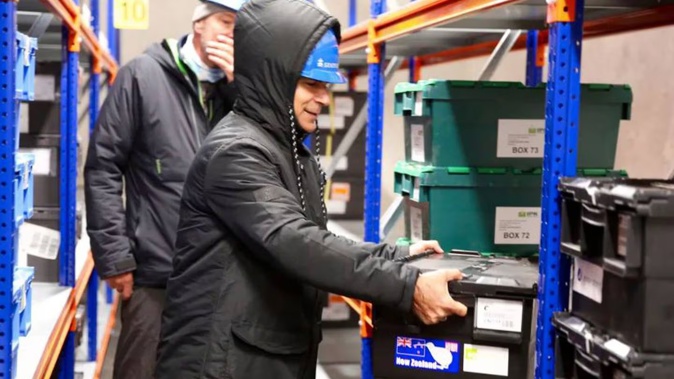
By Susan Murray of RNZ
Pasture seeds from New Zealand have just arrived in a doomsday mountain vault in Norway — safeguarding their survival into the future.
The Svalbard Global Seed Vault is on the remote Arctic Svalbard archipelago, 120m underground in the permafrost.
It stores duplicates of every important crop in the world as an insurance policy to secure future food supplies in case seeds are lost due to mismanagement, accidents, funding cuts, war, sabotage, disease or natural disaster.
Wild seed varieties are also stored for future breeding to increase the range of plants that can adapt to climate change.
The director of New Zealand’s Palmerston North-based Margot Forde genebank, Dr Kioumars Ghamkhar, said from its store of over 2400 plant seeds, it had sent sent only some ryegrass, a standard clover and a subterranean clover.
He said being a forage-based country, New Zealand had the most diverse forage collection in the world.
“They’re not necessarily used pasture species of today, but they can be potential pastures of the future as well, meaning that they probably are families or sisters of the current pastures, like perennial ryegrass or clover.
“So for just what we sent this time around it was perennial ryegrass, subterranean clover and some other clover.
“Basically, subterranean clover is a species that is grown in Australia a lot. We think it’s got a very good future here.
“Of course, some farmers grow it already, Lincoln University is working on it on a large scale, but it’s not used as broadly as a white clover.
Dr Kioumars Ghamkhar is optimistic about the potential of subterranean clover New Zealand. Photo / Supplied
“So it’s got a lot of potential for future adaptation to climate change .... it’s got more what we call sub-species, like different groups within one species,” he said.
Ghamkhar said while the seeds New Zealand sent to the Norwegian seed bank “belong to humanity”, the gene bank worked like “a Swiss bank”.
Click for more rural and farming news
“It’s the kind of black-box system for us, only New Zealand can have access to the seeds it sends there.”
Ghamkhar said it was important New Zealand seed was stored in case of a natural catastrophe such as a fire, an earthquake, or a war.
“A good example of that is Syria, they had one of the biggest collections of wheat in Syria, and a lot of other crops.
Dr Kioumars Ghamkhar said the black packages were always sent with a New Zealand flag and kiwi logo. Photo / Supplied
“And then the Syrian war happened, civil war — or Isis basically having taken over the city that the gene bank was based in — and a lot of material was lost.
“But luckily, they had already sent a lot of back-up to Svalbard.”
That seed has now been accessed and relocated to storage in Lebanon and Morocco.
Sending the New Zealand seed to Norway involved double packaging it in aluminium bags and airmailing it.
The packages are carefully handled, with the boxes opened in front of several people. They are then deposited beside New Zealand’s other seeds.
Ghamkhar said the black packages were always sent with a New Zealand flag and kiwi logo.
More details about the vault can be found here.
– RNZ
Take your Radio, Podcasts and Music with you

/cloudfront-ap-southeast-2.images.arcpublishing.com/nzme/SLGYAIJLUNEQJNWKEVRAWIK2HU.JPG)
/cloudfront-ap-southeast-2.images.arcpublishing.com/nzme/AY54I3F4MBDJPDGX76MLXUVI7U.JPG)








